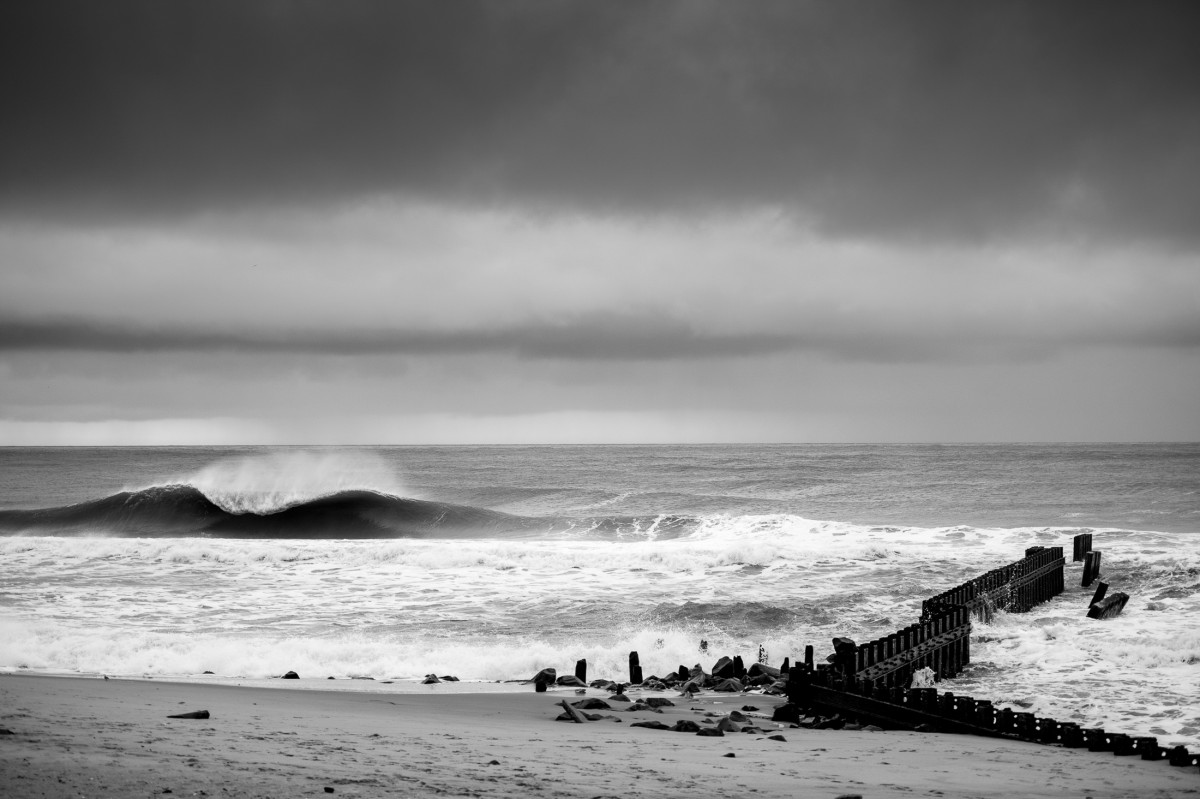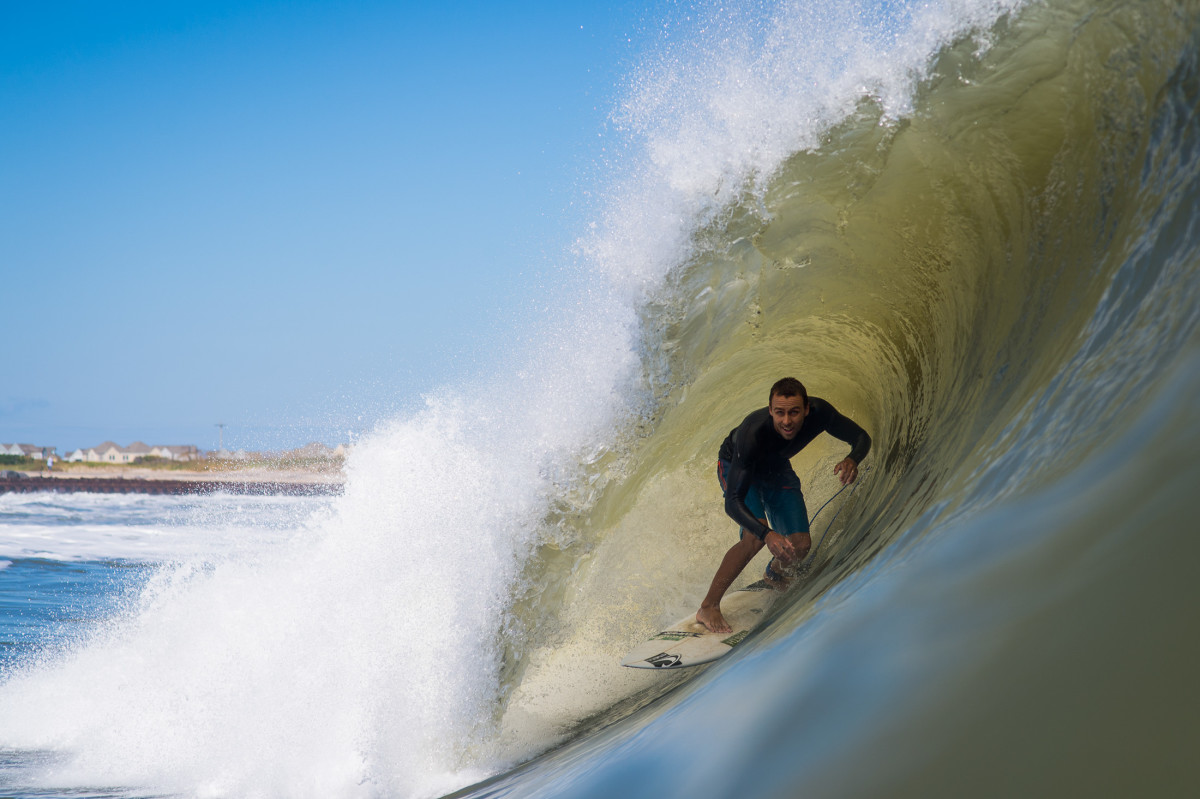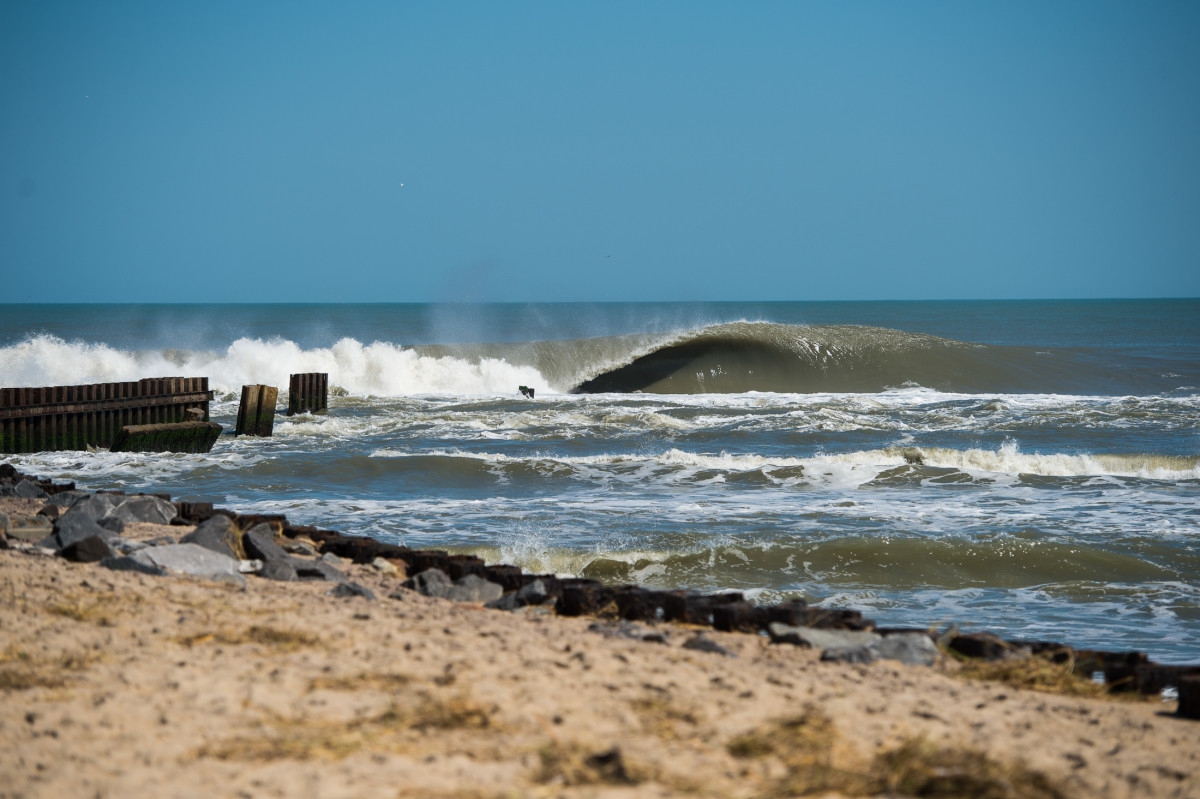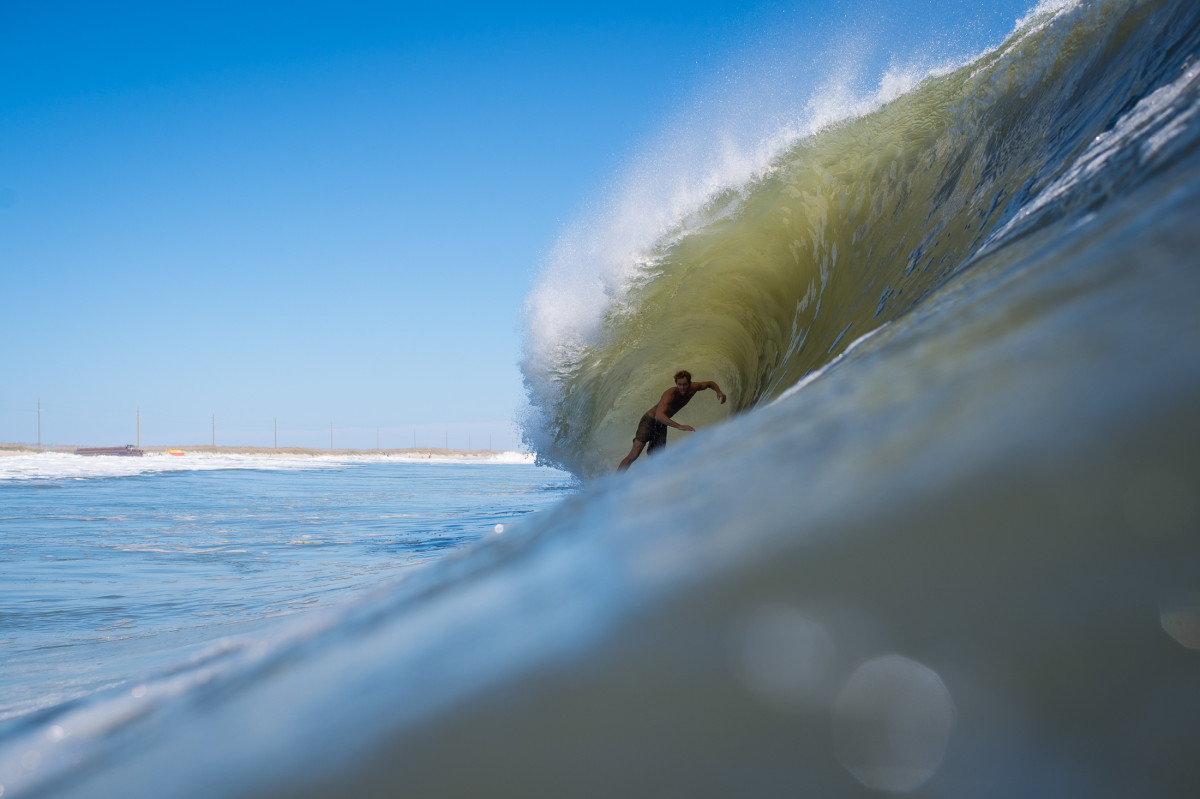
Daniel Pullen
1995.
El Nino was dissipating. La Nina was taking over. Kelly Slater was battling Sunny Garcia for a third title. Taylor Steele took Good Times on the road with Blink-182 and Pennywise. OJ was set free and two-time Brazilian surf champ Ricardo Toledo had a son.
Also, the Atlantic Ocean was hot.
In ’95, the Atlantic saw 19 named tropical cyclones, one short of the record at the time. The gusty winds of 2005 blew that away (literally … Hurricane Wilma maxed out at 185 mph) with 28 named storms. That was bested by 30 in 2020, a fact that few East Side surfers remember from that weird pandemic haze.
No matter if the preseason forecast calls for two storms or 30, there’s always hype and conjecture at the start of each hurricane season. But this is about hard numbers and real time data. None of the ’95, ’05 or pre-season conditions matched up to what’s going on at the equator right now. Hurricane season started Saturday. Seas around the world are hotter than ever, but this part of the ocean, specifically, is about to boil over.

Daniel Pullen
“This is the warmest the Tropical Atlantic has ever been,” says James Wieland, a south Florida surfer of 33 years and WPTV on-air meteorologist. “That’s going to mean more systems developing and more storms strengthening.”
Weiland learned to surf in high school, which drew his science-mind to study weather and graduate from Florida State University. He remembers surfing Hurricane Felix for days on end in ’95. But he’s looking at the numbers more gravely this season.
Warm SST’s between the Caribbean and West Africa don’t alone make for a wild hurricane season alone, any more than spilled gasoline automatically equates to a giant fireball. But the atmospheric phenomenon La Nina is taking hold. Trade winds, that keep cyclones from becoming stronger, tend to lie down during La Nina. So now we have super dry wood lying in our gasoline metaphor.
For the world to catch on fire, you would still need a match or at least a spark.
That may come in the form of an active West African monsoon season, which tends to be the seed of these storms. According to every metric, it could be a wild year. And the East Coast has some solid folklore when it comes to multi-day swells in pee-warm water. It could be a constant pulse to your Caribbean reef breaks, your Carolina beach breaks, your New England point breaks and whatever little weirdo spot Ben Gravy finds to ride, at a frequency never before seen.

Daniel Pullen
“Between the water temps, the West African monsoons, El Nino phasing into La Nina with less wind shear to inhibit the storms and generally slower trade winds, it’s like a quadruple whammy,” says Wieland.
Because how much is too much?
NOAA’s late May forecast calls for 4 to 7 major storms (Cat 3 or greater.) But much of the East Coast’s miles of featureless beaches don’t do well with long-period groundswell. So, for every cove, pier and inlet that turns into happy hour, there’s a few hundred miles of boardwalk town that are just dumping until last call. Truth be told, the mainland of North America tends to do better on tropical storms and Cat 1s.
Related: Looking Back at the 5 Best East Coast Hurricane Swells of All Time
“There’s such a difference between East Coast and West Cost surf in regard to wave period,” Wieland explains. “If there’s a 2-foot at 18-seconds swell in the Pacific, its overhead and good. On the Atlantic side, 18 seconds might be a closeout across the whole horizon.”
And dumpy closeouts may be the least of your worries when one of these beasts comes to your coastal town. 2020 saw 417 fatalities and $67 billion in damage (adjusted for inflation.) More storms mean better chance of waves. It also means better chance that someone you know has the bay come through their kitchen.

Daniel Pullen
“We all root for hurricanes to form waves,” adds Weiland. “Then we don’t want them to make landfall near us. Surfers have homes, families and communities. And we don’t want them hitting someone else’s town either. Most of us have been through it before and we know how serious it is.”
Big wave tour competitor Will Skudin of Long Island loves nothing more than rare heavy water in his own backyard. Like most East Coasters, he grew up with the folklore of hurricanes. And his hometown gets very good on these groundswells. Think Hurricane Katia for the New York Quick Pro in 2011. But just a year after the Quik Pro, Skudin saw his home, business and entire town get swallowed by Superstorm Sandy.
“Barrels can’t be celebrated when a hurricane makes landfall anywhere,” says Skudin after seeing so much destruction.
He and his nonprofit, Surf For All were part of Sandy recovery. They also raised $100,000 for generators and other necessities after the series of storms that walloped the Caribbean in 2017. His own boots were on the ground in Puerto Rico after Hurricane Maria helping to distribute basic supplies.

Daniel Pullen
“If someone loses their home and we’re high-fiving over head-high barrels, then there’s a major issue with our priorities,” he offers.
Whereas hurricanes used to be more about the score for East Coasters, increased populations in coastal communities, stronger/more frequent storms thanks to climate change and destruction like Hurricane Ian’s $50-billion assault on the Gulf Coast in 2022, have surfers looking at both sides of the story. “The best scenario is that all those storms just stay offshore – a bunch of those Cabo Verde storms to form, stay off the coast and maybe do that loop around the Bermuda High,” says Wieland.
Clearly, storms will do what they want. No amount of rooting will bring cleaner surf or deter landfall. We can hope. We can make those simple preparations. And we will watch, intently.

